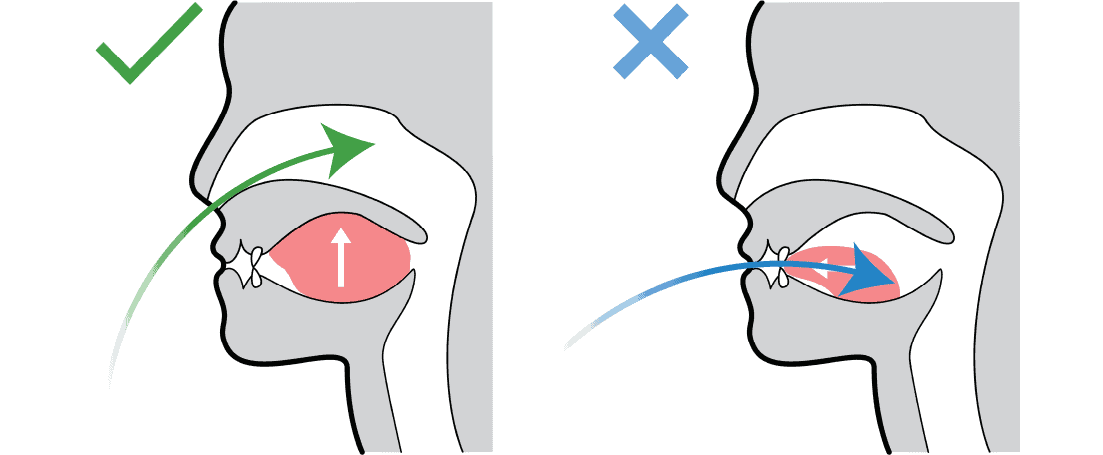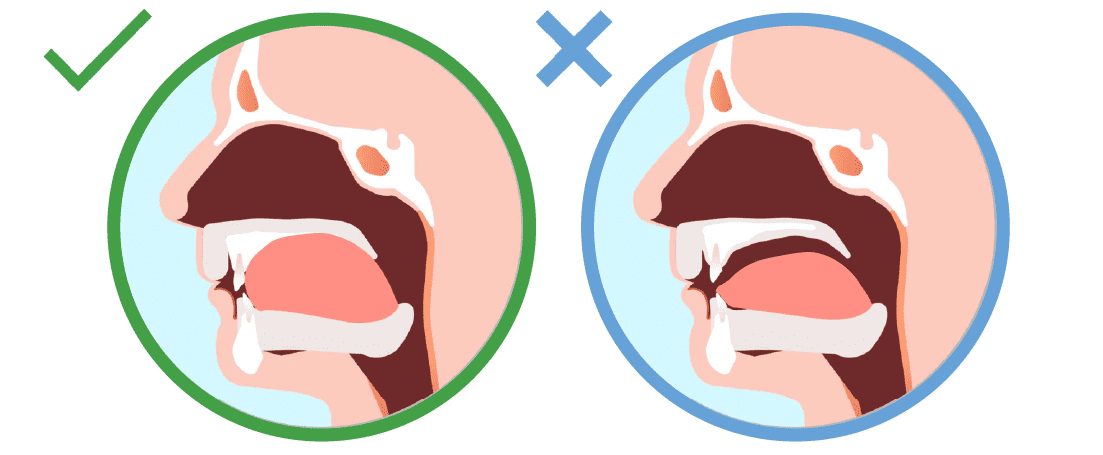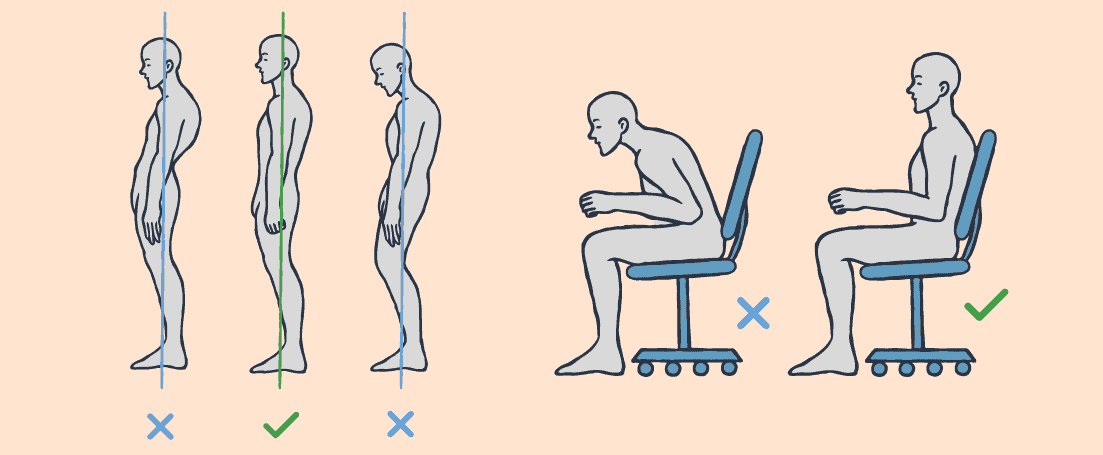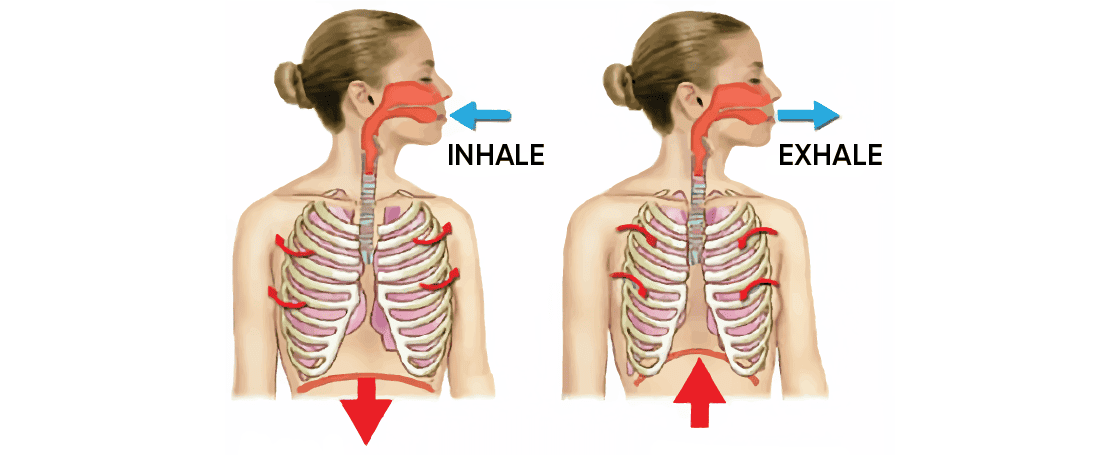If sit-ups and squats are the way to get toned abs and legs, then mewing is the Queen of exercising your facial muscles and getting a razor-sharp jawline.
But doing mewing exercises without getting the basics of the practice right can have the opposite effect. Breathing in the right way is just one of the musts to will help you achieve a better-looking and stronger jaw.
Find out how to breathe properly and get a personalized mewing workout plan by completing a quick quiz below!
In this in-depth guide, you will learn:
- 📍 How to manage breathing difficulties. We’ll offer a list of the most common reasons why people can’t breathe while mewing, and what you can do about it.
- 📍How to breathe correctly: a list of tips on how to breathe properly, use tongue space and tongue placement right, and avoid making terrible mewing mistakes.
- 📍Breathing basics: the anatomy of natural breath, proper mouth breathing, and how to get expand your breathing capabilities.
- 📍How to improve your breathing: a few tips to help you avoid teeth touching, avoid lack tongue space, and breathe properly even with your lips sealed.

Reasons Why You Can’t Breathe While Mewing
If you’re new to mewing, you’re most likely not familiar with breathing correctly either. This is nothing new since many people have never explored mewing as a practice and are not aware of its benefits. Even today, people struggle to switch from mouth breathing to nose breathing or still deal with incorrect tongue posture, crooked teeth, asymmetric lips, narrow palate, deviated septum, and enlarged tonsils.
Let’s examine a few key reasons why breathing might be an issue when mewing.
Mouth Breathing

In a nutshell, mewing means keeping your tongue on the roof of your mouth to activate your facial muscles. Once you place your tongue up, you’re simply blocking your oral airways and making it impossible to breathe through your mouth. The correct way to breathe while mewing should be through your nose. You can achieve this by being consistent with your practice and exercises.
Insufficient Tongue Space
Some people can have larger tongues than others, and this can be an issue when learning to mew. In other words, once the tongue extends into the correct mewing position, it will blocks most of the airways and cause major breathing issues. Still, with regular exercises, everyone can find a mewing position that works for their tongue and master the art of nasal breathing.
Incorrect Tongue Posture

Like using tongue space the correct way, keeping a correct tongue posture is crucial for correct mewing. Not only does the wrong posture block your airway and makes proper breathing a struggle, but it also locks your jaw in an uncomfortable position, which can then lead to crooked teeth and misalignments.
Before you start mewing, we recommend checking out our crucial in-depth guide on how to do mewing, where we offer tips about how to maintain a correct tongue posture and enhance the function of your airways as well as lungs.
Physical Obstructions & Orofacial Disorders
Physical obstructions such as mucosal inflammation and deviated septum are a huge reason why some people can’t mew at all. These health issues include blocked nasal cavities due to a variety of reasons, making it impossible to breathe through the nose and causing major discomfort in the palate.
Orofacial disorders are one of the most common reasons why people can breathe while mewing. If you’re struggling with an orofacial disorder, it’s recommended to consult a doctor before you start any mewing activities.
How to Breathe While Mewing
Nasal breathing is the key to mewing and proper tongue posture. If you want to do it successfully, it’s essential to incorporate the right breathing technique. If you’re among those who struggle to breathe while mewing, here are some tips to help you during the process:
Keep Your Lips Closed
As we already mentioned, mewing requires nasal breathing. For the perfect tongue placement, make sure to keep your lips and teeth closed. Keep in mind that excessive clenching will lead to discomfort, so do it gently and don’t force any movement.
Say the Word “Sing”
This will help you position the entire length of your tongue at the roof of your mouth. While making the “ng” sound, naturally lift the back of your tongue against your soft palate. If you struggle to achieve this, you might be putting too much pressure on your soft palate and are blocking your airwaves – which further prevents you from breathing properly through the nose.
Maintain a Good Body Posture

It’s hard to mew and breathe while slouching or being in an uncomfortable position. To ensure maximum success here, experts recommend sitting or standing, with your back straight. This won’t only make you focus on correct nasal breathing, but will also help you see whether you’re engaging the right facial muscles.
Chew & Swallow Correctly
Chewing has a lot to do with breathing, and you have to sync both processes to do mewing correctly. Chewing is an integral part of mewing and can help integrate the nasal breathing process better. To nail it on the first try, you can read our detailed guide on how to chew while mewing.
Same as with chewing, swallowing correctly is also crucial when newing. By learning how to swallow properly while mewing, you will be able to breathe naturally breathe without struggling,
What Should Breathing Feel Like?
When it comes to mewing, experts note you might feel mild pressure across the middle of your face, jaw, and chin. However, your breathing should feel natural and unobstructed once you get the hang of the practice. Don’t worry if you can’t mew and breathe correctly, to begin with. Consistency and regular exercise will help you master the mewing technique successfully in time.
Anatomy of a Breath

Breathing is a natural process that occurs from the second we’re born to the second we die. This ongoing process is an instinct so activities like chewing as well as swallowing will also come naturally.
Even though our body uses the entire respiratory system for breathing, the main breathing muscle is our diaphragm. This muscle is shaped like a parachute and spans the circumference of the lower rib cage with each breath. The diaphragm sides move in more unique ways.
For instance, when you take a breath, your central tendon is pulled down and the major moving action happens in the side tissue of the diaphragm. This tissue expands your thorax and brings air into your lungs. When you exhale, your muscles return to their resting length, thus forcing the leftover air out.
Find Your Natural Breath
Whether you’re mewing or not, it’s important to find your natural breath and a dynamic that works best for your body. The good news is that there’re many techniques that can help this process. For instance, you can curl your fingers under your lowest rib, front of your torso, and start inhaling slowly. As your belly starts to expand, pay attention to the exact moment when the ribs start to lift and press against your fingers.
Don’t force this process though. It’s important to distribute the breaths in your torso well and feel how much movement you can get with minimal effort. Now, gently exhale and feel the gentle press in your heart, throat, and mouth area. Repeat the process for a couple of minutes. All in all, this exercise should require minimal effort, given the anatomy of your natural breath and the practice of correct breathing.
Having Trouble Breathing? 5 Tips to Better Breathing in General
Breathing troubles can be caused by a wide variety of reasons. Luckily, there’re several things that can improve your breathing in general:
1. Change your posture
When you keep your body in a proper posture, your rib cage and diaphragm are able to fully expand and increase the range of motions in your body’s front. This will help your thorax expand to its full capacity and allow you to breathe better.
2. Change your sleeping position

Even though many people aren’t aware, sleeping on your back may cause your tongue to block your airways. This is why experts recommend sleeping on your side. As a bonus factor for improving your the rhythm and quality of your breaths, you can add an extra pillow between your legs to ensure proper support for your spine.
3. Meditate
Meditation is one of the best ways to focus on your breathing and take a control of the breathing process. On top of that, meditation is great to release stress and anxiety and can help you practice deep and shallow breathing depending on what you want to achieve.
4. Stretch daily
Stretching is a great way to release any tension in your shoulders, chest, and back. Stretching on a daily basis will ultimately help you fully expand your ribcage while breathing.
5. Incorporate healthier habits
Some tiny changes such as eating healthier, exercising regularly, and taking care of your well-being aren’t only good for the overall quality of your life but also for quality breathing and mewing. After all, healthier habits have a positive impact on your body, and your respiratory system is no exception.
Whether you want to improve your bite, strengthen the anatomy of your face, or fix a health issue like asymmetry or TMJ issues, mewing is the ultimate exercise to ensure you do any of these successfully. A word of caution, since mewing requires proper posture and monitoring, when you first start doing it, consult a professional for guidance or read our handy guides on how mewing works.



